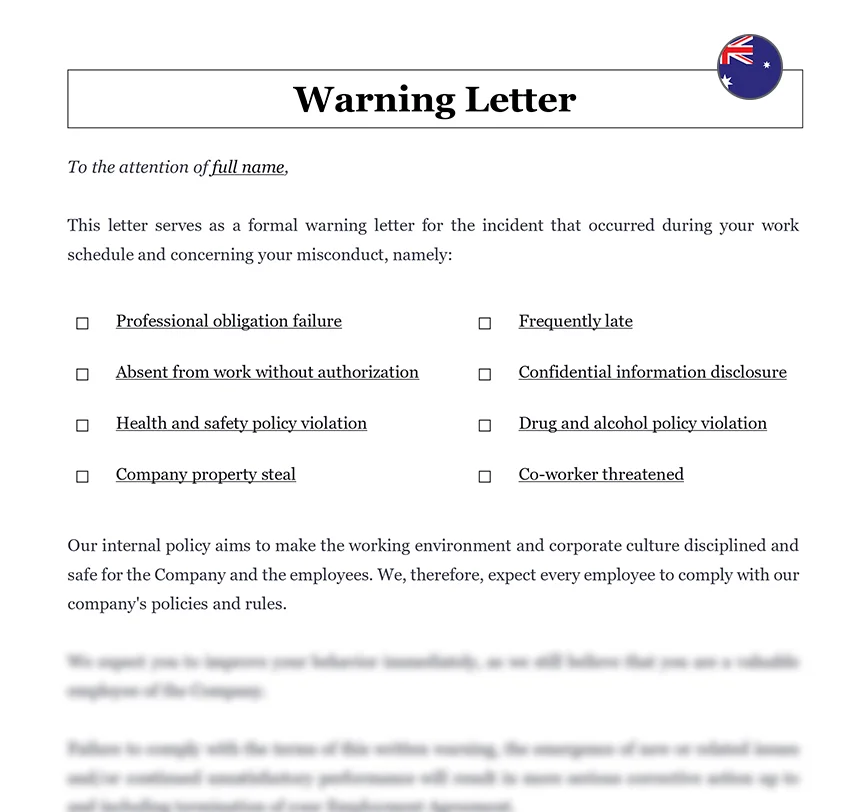Ready to use legal template
Drafted by experienced lawyers
Compliant with Australian law
Ready to use legal template
Drafted by lawyers
Compliant with Australian law
Learn more about Employee Warning Letter in Australia
An Employee Warning Letter is a formal document issued by an employer to address misconduct, poor performance, or breaches of company policy by an employee. Its primary purpose is to clearly communicate the issue, outline expectations for improvement, and provide a record of the warning for future reference. In the context of Australian employment law, issuing a written warning is an important step in fair disciplinary procedures and can play a critical role in managing workplace behaviour and resolving issues before more serious action is taken. At Themis Partner, our professionally drafted Employment Warning Letter is tailored for use in Australia and is easy to edit in Word format. Download now and ensure your HR documentation is clear, compliant, and ready to use when needed.
Table of contents
-
What is an Employee Warning Letter?
-
What is included in the Warning Letter?
-
How to draft an Employee Warning Letter in Australia?
-
Why use an Employee Warning Letter in Australia?
-
When do you use an Employee Warning Letter?
-
What is the legislation in Australia regarding Warning Letters?
-
What is the last written warning in Australia?
What is an Employee Warning Letter?
An employee warning letter, also known as a disciplinary letter or written warning, is a formal document issued by an employer to an employee to address performance or conduct issues. It serves as a written record of concerns raised by the employer and communicates the consequences of continued unsatisfactory behavior or performance.
What is included in the Warning Letter?
A warning letter typically includes:
| ➤ Date of issuance |
| ➤ Employee's name and position |
| ➤ Details of the specific performance or conduct issues |
| ➤ Reference to relevant company policies or standards |
| ➤ Explanation of the impact of the behavior on the workplace |
| ➤ Expectations for improvement or corrective action |
| ➤ Consequences of further infractions |
| ➤ Signature lines for the employee and employer |




